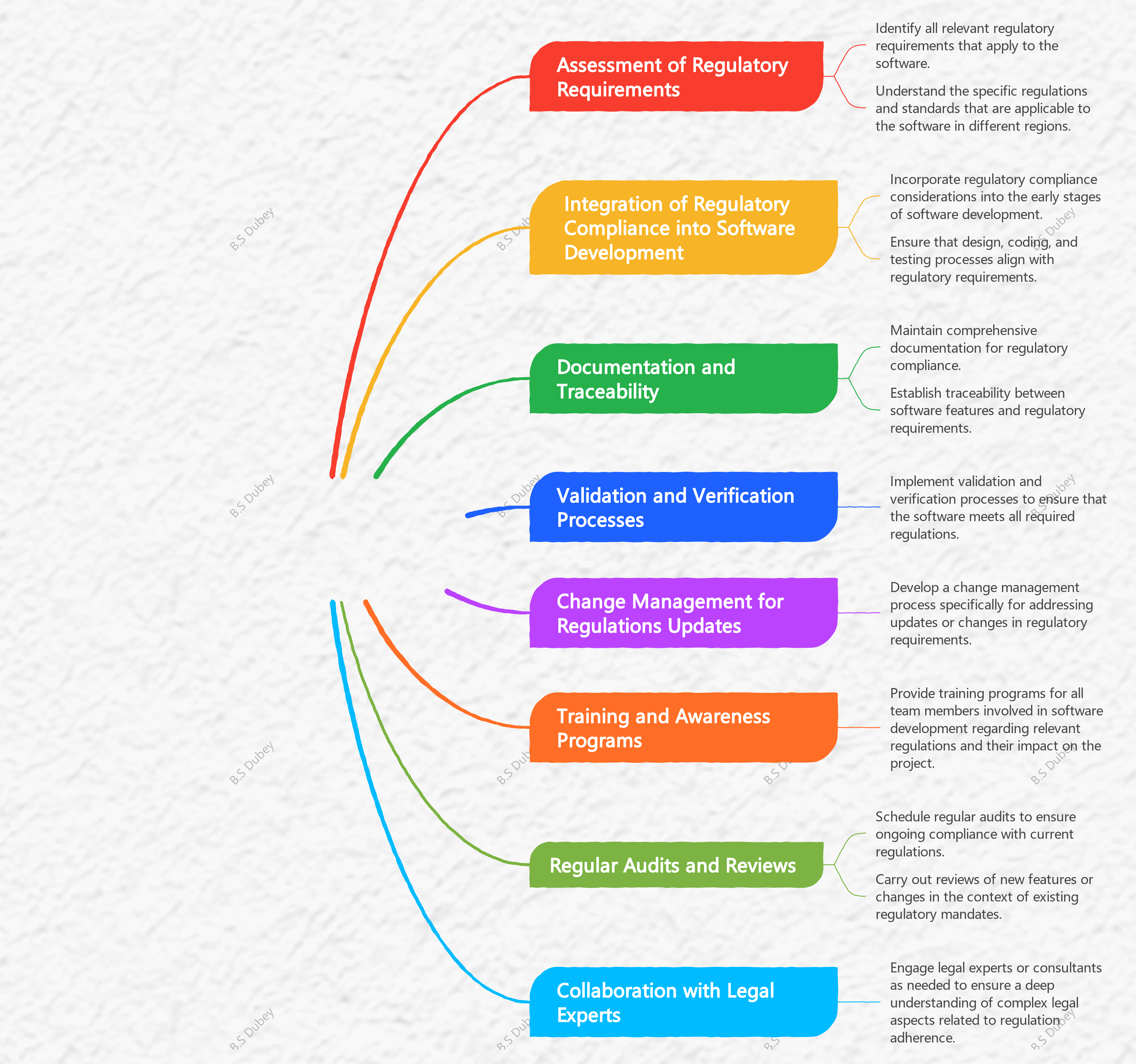As a Program Manager , how you would manage REG , in your programs?
If we’re talking about software, “REG status” usually means how registered the programme or a part of the system is. If the software is registered, licensed correctly, or in trial mode, this state can let you know. How the software works, which features you can access, and how much help or updates you can get from the software provider can all be affected by the registration status. So that we can better understand the idea, let’s look at some examples:
- Assessment of Regulatory Requirements
- Identify all relevant regulatory requirements that apply to the software.
- Understand the specific regulations and standards that are applicable to the software in different regions.
- Integration of Regulatory Compliance into Software Development.
- Incorporate regulatory compliance considerations into the early stages of software development.
- Ensure that design, coding, and testing processes align with regulatory requirements.
- Documentation and Traceability
- Maintain comprehensive documentation for regulatory compliance.
- Establish traceability between software features and regulatory requirements.
- Validation and Verification Processes
- Implement validation and verification processes to ensure that the software meets all required regulations.
- Change Management for Regulations Updates
- Develop a change management process specifically for addressing updates or changes in regulatory requirements.
- Training and Awareness Programs
- Provide training programs for all team members involved in software development regarding relevant regulations and their impact on the project
- Regular Audits and Reviews
- Schedule regular audits to ensure ongoing compliance with current regulations.
- Carry out reviews of new features or changes in the context of existing regulatory mandates.
- Collaboration with Legal Experts
- Engage legal experts or consultants as needed to ensure a deep understanding of complex legal aspects related to regulation adherence.


